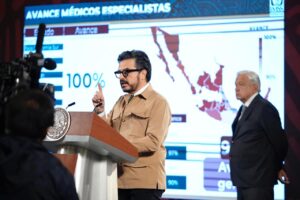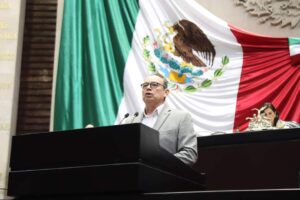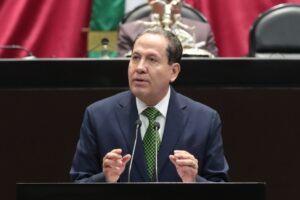The .COM token will be a focal point of their ecosystem, with first-of-its-kind utility such as staking .COM tokens to earn other BRC20 tokens launching via the platform’s innovative Initial Farming Offering (IFO) system. As the technology continues to develop, there are possibilities of changes that might be less beneficial for users and have security-relevant shortcomings. Also, note that the contents of this article are only educational and not financial advice, you are advised to do your own research.
- Not to be confused with the protocol Bitcoin Ordinals, which is the eponym.
- Currently, the largest BRC-20 token in terms of market capitalization is ORDI, which was also the first fungible token to be issued using the BRC-20 standard.
- The BRC-20 token standard and BRC-20 tokens open up the Bitcoin blockchain to a large extent.
- BRC-20 and ARC-20 tokens have very similar utility, although there are some differences between the two.
- Unlike ERC20 tokens, crosschain compatibility remains limited for BRC20 tokens, along with utilisation in DeFi protocols, but we view this as an exciting space with huge growth potential in the coming months and years.
BRC-20 tokens do not identify with any of these and hence cannot be stored on the MetaMask wallet at the time of writing. The use cases for BRC-20 standard tokens as on DeFi protocols built on the Bitcoin network are numerous. BRC-20 tokens can be integrated into decentralized exchanges, lending protocols, and yield farming systems if this goal is achieved.
The JSON contains pieces of executable code bits that can be deployed on the Bitcoin network. These define every aspect of the token including the supply, minting limit, and the token’s Identity. ERC-20 is a fungible token standard on Ethereum using smart contracts, while BRC-20 is a clever way to create semi-fungible tokens using ordinal inscriptions on Bitcoin.
BRC-20 vs ERC-20 Tokens: What’s the Difference?
Not only have over 14,000 tokens been created using this technology, these tokens have surpassed a cumulative market capitalization of $600 million and are still going strong at the time of writing. It has enjoyed a good reception from cryptocurrency enthusiasts; this is largely thanks to the reputation and popularity of the Bitcoin network on which they run. This data inscribed to satoshis can range from images, video, audio, text, most common cryptocurrencies and even entire applications such as a simplified version of the video game DOOM. As we’ll see below, BRC-20 tokens are essentially ordinal inscriptions with a specific type of text embedded into them, providing a set of rules and specifications for creating and managing the tokens. While inscribing text has been a popular early use case for Bitcoin NFTs, due to the nascency of the technology, new use cases may emerge over time.
This makes for a more inclusive token generation and a more decentralized distribution mechanism. On the other hand, ERC-20 tokens distribution can be managed by a single entity, giving room for manipulation and centralization. DeFi on the can i accept bitcoin should i accept bitcoin Bitcoin blockchain is still in the early stages and far from reaching the heights of the DeFi space on EVM networks and Ethereum. However, BRC-20 tokens could be the start of a decentralized financial system on the Bitcoin blockchain.
Unlike bitcoin which is relatively rigid, BRC-20 tokens are flexible and can be integrated into DeFi protocols. This includes BRC-20 tokens, which are fungible tokens on the Bitcoin blockchain that can have a custom supply and ticker. In this article, we’ll explain what BRC-20 tokens are, how they work and how you can use them. To explain, for the majority of Bitcoin users, the single purpose for BTC has always been the decentralization of value storage, thus BTCs nickname “digital gold”. Naturally, the Bitcoin white paper by Satoshi Nakamoto envisions BTC as a “peer-to-peer electronic cash system”.
This is not the same for ERC-20 tokens, as the ERC-20 protocol is in resonance with the Ethereum network. Tether utilized the asset creation system on Omnichain and EVM networks to create a decentralized and virtual representation of the US dollar and other fiat currencies. The same system has been used to create crypto assets pegged to other real commodities like gold and real estate. BRC-20 tokens can serve the same purpose and with more developments in this space, and it might emerge as a favorite candidate for the tokenization of real assets due to its structure. The most basic thing you could do with your BRC-20 token is to transfer it to your peers as a representation of value.
How do BRC-20 tokens work?
BRC-20 is an experimental fungible token standard using ordinal inscriptions on Bitcoin. As exciting as all these innovations sound, please always be aware that experiments, such as the BRC-20 standard, may put you at risk. Interacting with Bitcoin ordinals, including BRC-20 tokens, involves a sophisticated understanding of the Bitcoin network, such as managing UTXOs and third-party wallets. To clarify, you can’t just use a standard bitcoin account for interacting with these types of assets. BRC-20 tokens are a standard built on top of the Bitcoin Ordinals protocol. Using this mechanism, individual satoshis, or sats, on the Bitcoin network are inscribed with a serial number and certain data.
Then, since the Bitcoin network uses a proof-of-work consensus, it is much slower, more expensive and energy-consuming than Ethereum, which uses proof of stake. That means creating BRC-20 tokens requires custom app development more time, money and funds than just releasing an ERC-20 token. However, this same PoW mechanism means that Bitcoin tokens are much more secure and much more immutable than ERC-20 tokens.
Plus, since he’s been long inactive, these satoshis are also quite scarce. BRC-20 tokens are the first, yet experimental, standard for fungible tokens on the Bitcoin blockchain. The primary purpose of the Bitcoin network has always been a decentralized, peer-to-peer money transfer system at its core, However, it’s also often compared to digital gold, offering crypto users a secure store of value. The BRC-20 tokens are managed utilising a UTXO system and require specialised front-ends including wallets and exchanges in order to translate and manage this data for users. Expanding the available infrastructure for BRC20 users will be imperative for the future growth of the space. With a limit placed on the mints, multiple ordinals wallets can engage in the minting process of the BRC-20 token.
Users can also use JSON data to mint new tokens or transfer existing tokens to other addresses. While Ledger can protect you from exposing your private key on the internet, it can’t prevent you from mismanaging your ordinals—You can’t yet manage BRC-20 tokens directly with your Ledger device. However, you can start to store other types of ordinals using Sparrow wallet and a Ledger device. For more information, make sure you check out the support article on how to manage ordinals. Well, the Taproot upgrade and the following innovation of the Bitcoin Ordinals protocol created a whole new world of opportunities on Bitcoin. Now, tokens on BTC are not only possible, they have become a whole movement.
What Is the BRC-20 Token Standard?
Sticking true to its purpose, most Bitcoin users were happy with its security and didn’t want to use Bitcoin for much else than those core values. Another possible use case is the development of a BRC-20 bitcoin peg and bridge to properly introduce bitcoin into DeFi systems and also connect other blockchains to the Bitcoin network, respectively. Pending future integrations, BRC-20 tokens can potentially be used for making payments on commercial platforms and service providers seeking to adopt more flexible payment solutions.
The token has reached a market capitalization of over $1 billion, despite not having any utility and essentially just being a meme token. The first and currently largest BRC-20 token, ORDI is short for ordinals and was the first token to utilise this standard. It recently garnered significant attention by being the first BRC-20 token to be listed on Binance, but still lacks in terms of utility (it actually isn’t tied to the Ordinals protocol or the popular Ordinals Wallet).
Can BRC-20 Tokens Be Stored on the MetaMask Wallet?
BRC-20 tokens can be purchased on centralized exchanges where they are listed or on ordinals exchanges. To purchase BRC-20 tokens on an ordinals exchange, an ordinals wallet is required. However, behind the fame and financial viability, BRC-20 transactions have added more stress to the Bitcoin blockchain. Bitcoin network’s 7TPs speed has since been overwhelmed by tons of transactions related to BRC-20 and ordinal NFTs. On 8 May 2023, the Bitcoin network reportedly had over 300,000 transactions in the queue as transaction fees rose to 2 year record highs of over $30 as seen in the chart below.
It’s a simple black-and-white cartoon drawing of a bald man with a wistful expression. This particular token is a memecoin and to learn more about these types of assets, check out the full article on what a memecoin is. A number of BRC-20 tokens have now gathered significant followings and gained traction with large marketcaps and listings on centralised exchanges. Unlike ERC20 tokens, crosschain compatibility remains limited for BRC20 tokens, along with utilisation in DeFi protocols, but we view this as an exciting space with huge growth potential in the coming months and years. If nothing else, BRC-20 tokens are a prime example of the power of open-source communities and collaborative development. When a developer introduces a novel concept and makes it open-source, the idea can evolve and take on a life of its own thanks to other enthusiasts continuing to push the limits of the experiment.
They take advantage of the fact that each individual satoshi can be uniquely identified by its equivalent of a serial code. This increased the amount of data allowed in Bitcoin blocks and thus opened the door to new capabilities like Ordinals. While there were several attempts to include larger amounts of data on the bitcoin network, there was no set method, and doing so was not commonplace. This website is using a security service to protect itself from online attacks.






